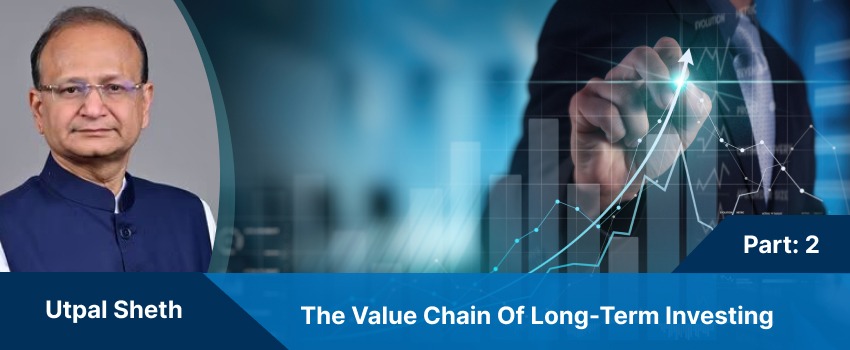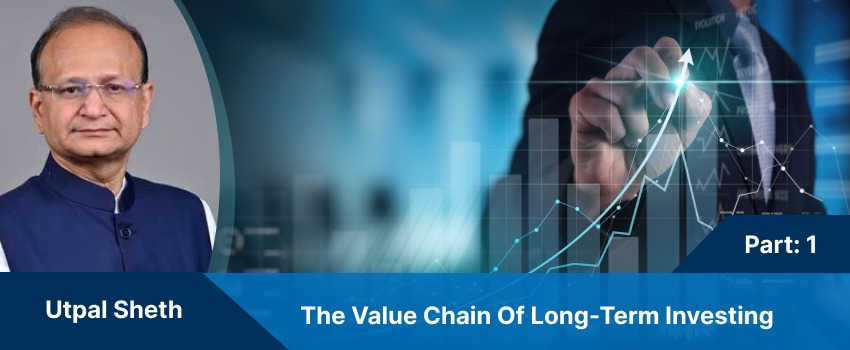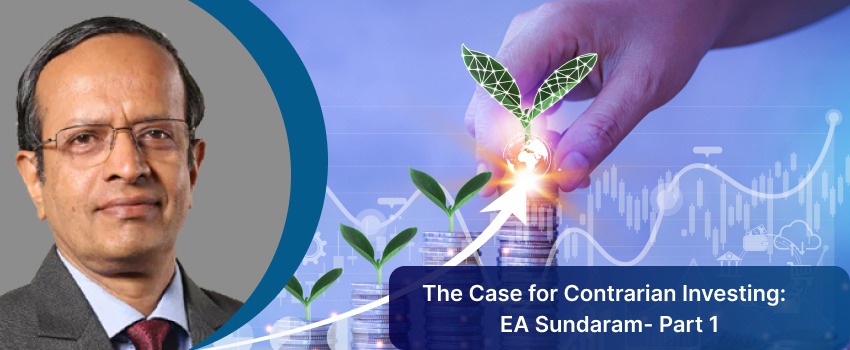The only way you can make great returns in the market is to ‘Buy Low, Sell High’. Now that’s glaringly obvious, you might say. Well if it is; let me ask you to elaborate on what is actually ‘High’ and what is actually ‘Low’? Most of us do not know the answer to this question. And providing an answer to this, is the purpose of my second blog of the series on ‘The Most Important Thing’ by Howard Marks. You can read the first one here.
Simply put the aim is to buy something for less than you sell it for. But there has to be a standard against which this low and high is measured. And the best put standard is the assets intrinsic value. Set against this standard, the meaning of the saying becomes clear: buy at a price below intrinsic value, and sell at a higher price. Of course, to do that, you’d better have a good idea of what is the intrinsic value of the stock you buy.
There are two approaches you can take – value investing or growth investing
Value investors lay emphasis on tangible factors. They look at financial metrics like earnings, cash flows, dividends, enterprise value and hard assets to determine the stocks intrinsic value. The quest in value investing is for cheapness. The primary goal of value investors, then, is to quantify the company’s current value and buy its securities when they can do so cheaply.
Growth investing on the other hand aims at identifying companies with bright futures. Thus there is less emphasis on the company’s current financials and more on its future potential.
However, there is no bright line of distinction between the two – both require us to deal with the future. In general, the upside potential for being right about growth is more dramatic, and the upside potential for being right about value is more consistent.
We, at MoneyWorks4me, have been long time advocates of the Value investing approach. And that is the way we suggest our investors to go. But the road to success isn’t that easy. Once you’ve identified your stocks intrinsic value using the value investing approach or contrarian investing as it is known, it requires you to hold onto your views consistently. As Keynes rightly put it, ”The markets can stay irrational longer than you can stay invested”.
And MoneyWorks4me has had first-hand experience of this. In August 2013, when the entire market was dumping PSU and cyclical stocks, MoneyWorks4me recommended a few stocks from this lot, after deep value analysis. Many stocks dropped in value after we recommended them to you. And what did we do then? We asked you to average them. Today, many of these stocks have doubled in their prices and it is only now when market participants are asking you to buy these very same stocks.
The point I am trying to make is that, as a value investor you have to have absolute conviction of your assessment of the stocks intrinsic value. So, if you like a particular stock at Rs. 60, you should like it more at 50 and much more at 40 and 30. But this is easier said than done. Any of you investors who have lost money in the market know what I am talking about. It is very difficult to invest more money in the stock that you’re currently losing money on! But like I said, the road to success isn’t easy.
Thus, there are two essential ingredients for profit in the stock markets: you have to have a view on intrinsic value, and you have to hold that view strongly enough to be able to hang in and buy even as price declines suggest that you’re wrong. Oh yes, there’s a third: you have to be right.
However, this isn’t enough! Establishing a healthy relationship between fundamentals – value and price is at the core of successful investing. For a value investor, price has to be the starting point. It has been demonstrated time and time again that no asset is so good that it can’t become a bad investment if bought at too high a price. And there are few assets so bad that they can’t be a good investment when bought cheap enough. To put it in the word of Howard Marks ‘No investment has the birth right of high return. It’s only attractive if priced right.
We now come to the question, what goes into the price? Duh, fundamental value of course. Wasn’t that what we were blabbering about this entire time? Sure enough, however, the stocks prices are also governed by two more things – investor psychology and Technicals
Most of us don’t have a clue about technical. But, having psychology on your side and understanding or at the very least, attempting to understand other investor’s minds and motives, may provide valuable insight that can be found nowhere else.
The polar opposite of this is trying to aimlessly chase market bubbles. We all know where it ends. (Just in case you have forgotten in these times of euphoria, let me remind you the 2008 sub prime crisis)
In short, buying a stock for less than its value is the most dependable way to make profits. Of course it doesn’t come with a guarantee… but it’s the best chance we investors have!
Best Stocks From:
Top 10 Stocks for 2024 Best EV Stocks in India Screener Alpha Cases Best Solar Energy Stocks in India Top AI Stocks in India Best Drone Stocks in India Best Sugar Stocks in India Top 10 Infrastructure Stocks in India Best Fintech Stocks in India Top Media Stocks in India Top Fertilizer Stocks in India
Need help on Investing? And more….Puchho Befikar
Why MoneyWorks4me | Call: 020 6725 8333 | Ebook | WhatsApp: 9860359463
*Investments in the securities market are subject to market risks. Read all the related documents carefully before investing.
*Disclaimer: The securities quoted are for illustration only and are not recommendatory












rational article 🙂 good to see some sense in the non sensible way the market behaves… how can we mere mortals who have no background in finance try and find the intrinsic value of the stocks ?? an article on that would be greatly appreciated 🙂